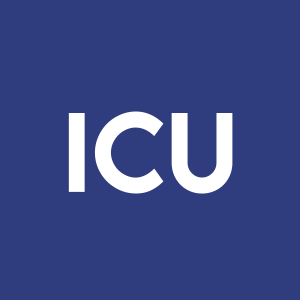FDA Grants Breakthrough Device Designation for SeaStar Medical’s Selective Cytopheretic Device for Adults Undergoing Chronic Dialysis
Rhea-AI Summary
SeaStar Medical announces FDA Breakthrough Device Designation for its Selective Cytopheretic Device (SCD) to treat chronic systemic inflammation in end-stage renal disease patients requiring chronic hemodialysis. This marks the fourth Breakthrough designation for SCD, expanding the company's addressable U.S. patient population to 745,000 annually. The device targets over 480,000 U.S. individuals requiring in-center hemodialysis, with treatment costs around $100,000 per patient yearly. The SCD is designed to selectively target proinflammatory neutrophils and monocytes during continuous renal replacement therapy, potentially improving survival and quality of life for patients who currently face a 42% five-year survival rate.
Positive
- Fourth FDA Breakthrough Device Designation expands addressable market to 745,000 patients
- Large target market of 480,000 U.S. patients requiring chronic hemodialysis
- Significant revenue potential with treatment costs of $100,000 per patient annually
- Priority FDA review and enhanced development resources due to Breakthrough status
Negative
- No clinical efficacy data presented for chronic dialysis indication
- Product still requires full FDA approval before commercialization
News Market Reaction 1 Alert
On the day this news was published, ICU declined 2.99%, reflecting a moderate negative market reaction.
Data tracked by StockTitan Argus on the day of publication.
This represents the fourth indication granted a Breakthrough Device Designation for the SCD by FDA
DENVER, Nov. 06, 2024 (GLOBE NEWSWIRE) -- SeaStar Medical Holding Corporation (Nasdaq: ICU), a commercial-stage medical device company developing proprietary solutions to reduce the consequences of hyperinflammation on vital organs, announces the receipt of a Breakthrough Device Designation from the U.S. Food and Drug Administration’s (FDA) Center for Biologics Evaluation and Research (CBER) for the Company’s patented, first-in-class, cell-directed Selective Cytopheretic Device (SCD) to treat chronic systemic inflammation in end-stage renal disease (ESRD) patients who require chronic hemodialysis, also known as chronic dialysis. More than 480,000 individuals in the U.S. with ESRD are treated by in-center hemodialysis at least three times a week at a cost of approximately
“This is our first Breakthrough Device Designation award for the SCD in a chronic indication. We appreciate the FDA’s continued recognition of the SCD’s potential to save lives and improve patient outcomes by targeting dysregulated immune responses. With this and the three prior Breakthrough Device Designations granted by the FDA, our addressable patient population in the U.S. has now reached at least 745,000 patients annually,” said Eric Schlorff, SeaStar Medical CEO, “This designation holds numerous benefits including enhanced access to FDA resources resulting in faster development, as well as priority review by the FDA, early access to patients and the potential for differentiated market positioning.”
“Patients with ESRD face an unacceptably high disease burden to include chronic fatigue, malnutrition, repeat hospitalizations, and a
In addition to chronic dialysis, the SCD has shown a measurable reduction in excessive inflammatory responses such as the reduction of solid organ dysfunction in a variety of preclinical and clinical studies, including sepsis, acute kidney injury, hepatorenal syndrome, cardiorenal syndrome, ischemia/reperfusion injury, intracerebral hemorrhage, cardiopulmonary bypass, chronic kidney disease, type 2 diabetes, acute respiratory distress syndrome and COVID-19, among others.
Selective Cytopheretic Device
The Selective Cytopheretic Device (SCD) is a patented cell-directed extracorporeal device that employs immunomodulating technology to selectively target proinflammatory neutrophils and monocytes during continuous renal replacement therapy (CRRT) and reduces the hyperinflammatory milieu including the cytokine storm. Unlike pathogen removal and other blood-purification tools, the SCD is integrated with CRRT hemofiltration systems to selectively target and transition proinflammatory monocytes to a reparative state and promote activated neutrophils to be less inflammatory. This unique immunomodulation approach may promote long-term organ recovery and eliminate the need for future RRT, including dialysis.
The SCD has been awarded FDA Breakthrough Therapy Designation for a total of four (4) indications, ranked by patient population:
- Chronic Dialysis
- Adult Acute Kidney Injury (AKI)
- Hepatorenal Syndrome (HRS)
- Cardiorenal Syndrome – Left Ventricular Assist Device (CRS-LVAD)
About SeaStar Medical
SeaStar Medical is a commercial-stage medical technology company that is redefining how extracorporeal therapies may reduce the consequences of excessive inflammation on vital organs. SeaStar Medical’s novel technologies rely on science and innovation to provide life-saving solutions to critically ill patients. The Company is developing and commercializing cell-directed extracorporeal therapies that target the effector cells that drive systemic inflammation, causing direct tissue damage and secreting a range of pro-inflammatory cytokines that initiate and propagate imbalanced immune responses. For more information visit www.seastarmedical.com or visit us on LinkedIn or X.
Forward-Looking Statements
This press release contains certain forward-looking statements within the meaning of the “safe harbor” provisions of the Private Securities Litigation Reform Act of 1955. These forward-looking statements include, without limitation, the ability of the SCD to treat patients with in ESRD and with other diseases; anticipated patient enrollment; the expected addressable patient population; the anticipated benefits of Breakthrough Device Designation on our ability to develop the SCD; expected patient benefits from the SCD; the expected regulatory approval process and timeline for commercialization; and the ability of SeaStar Medical to meet the expected timeline. Words such as “believe,” “project,” “expect,” “anticipate,” “estimate,” “intend,” “strategy,” “future,” “opportunity,” “plan,” “may,” “should,” “will,” “would,” “will be,” “will continue,” “will likely result,” and similar expressions are intended to identify such forward-looking statements. Forward-looking statements are predictions, projections and other statements about future events that are based on current expectations and assumptions and, as a result, are subject to significant risks and uncertainties that could cause the actual results to differ materially from the expected results. Most of these factors are outside SeaStar Medical’s control and are difficult to predict. Factors that may cause actual future events to differ materially from the expected results include, but are not limited to: (i) the risk that SeaStar Medical may not be able to obtain regulatory approval of its SCD product candidates; (ii) the risk that SeaStar Medical may not be able to raise sufficient capital to fund its operations, including current or future clinical trials; (iii) the risk that SeaStar Medical and its current and future collaborators are unable to successfully develop and commercialize its products or services, or experience significant delays in doing so, including failure to achieve approval of its products by applicable federal and state regulators, (iv) the risk that SeaStar Medical may never achieve or sustain profitability; (v) the risk that SeaStar Medical may not be able to access funding under existing agreements; (vi) the risk that third-parties suppliers and manufacturers are not able to fully and timely meet their obligations, (vii) the risk of product liability or regulatory lawsuits or proceedings relating to SeaStar Medical’s products and services, (viii) the risk that SeaStar Medical is unable to secure or protect its intellectual property, and (ix) other risks and uncertainties indicated from time to time in SeaStar Medical’s Annual Report on Form 10-K, including those under the “Risk Factors” section therein and in SeaStar Medical’s other filings with the SEC. The foregoing list of factors is not exhaustive. Forward-looking statements speak only as of the date they are made. Readers are cautioned not to put undue reliance on forward-looking statements, and SeaStar Medical assumes no obligation and does not intend to update or revise these forward-looking statements, whether as a result of new information, future events, or otherwise.
Contact:
Alliance Advisors IR
Jody Cain
(310) 691-7100
Jcain@allianceadvisors.com
# # #









